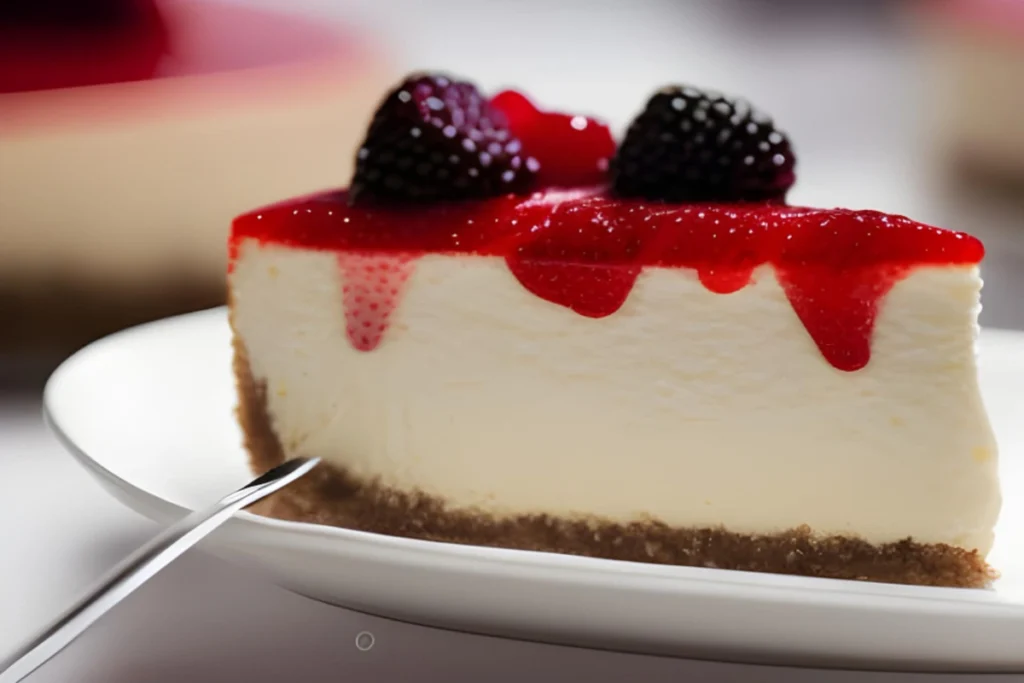
Introduction
Philadelphia Vanilla Mousse Cheesecake is a rich and indulgent dessert that perfectly balances smooth cream cheese with the delicate sweetness of vanilla. Its light and airy texture, combined with a melt-in-your-mouth creaminess, makes it a standout treat for any occasion.
The Perfect Blend of Cream Cheese and Vanilla
The combination of high-quality Philadelphia cream cheese and pure vanilla extract creates a harmonious flavor profile that is both rich and refreshing. The vanilla adds a subtle sweetness and aromatic warmth, enhancing the luxurious texture of the cheesecake. This balance ensures that every bite is both indulgent and perfectly smooth.
The Role of Philadelphia Cream Cheese
Philadelphia cream cheese is the key ingredient that gives this cheesecake its signature creamy texture and tangy undertones. Known for its superior quality and smooth consistency, it blends effortlessly with other ingredients to create a mousse-like filling that is light yet satisfyingly rich. The result is a cheesecake that is velvety, airy, and full of decadent flavor.
Key Ingredients for the Perfect Cheesecake
The success of a Philadelphia Vanilla Mousse Cheesecake depends on selecting the right ingredients. Each component plays a crucial role in achieving the ideal balance of flavor and texture.
Essential Ingredients for the Crust
A well-made crust provides the perfect foundation for the cheesecake. The most common choice is a classic graham cracker crust, made with:
- Graham crackers – Crushed into fine crumbs for a sturdy yet crumbly base.
- Butter – Melted butter binds the crumbs together and adds richness.
- Sugar – A touch of sugar enhances the sweetness and helps create a crisp texture.
For a twist, you can use crushed vanilla wafers or even chocolate cookies for a more indulgent variation.
The Smooth and Airy Vanilla Mousse Filling
The heart of this cheesecake is its luxurious mousse filling, which should be light, creamy, and bursting with vanilla flavor. Key ingredients include:
- Philadelphia cream cheese – The star ingredient that ensures a rich, smooth, and creamy consistency.
- Heavy cream – Whipped to add lightness and create the signature mousse texture.
- Sugar – Sweetens the filling without overpowering the vanilla.
- Vanilla extract or vanilla bean paste – Provides a warm, aromatic flavor.
- Gelatin (optional) – Helps stabilize the mousse for a firmer texture.
Preparation Tips for a Flawless Cheesecake
Making a perfect cheesecake requires attention to detail and a few expert techniques. Follow these tips to ensure your dessert turns out smooth, creamy, and crack-free.
Choosing the Right Ingredients
- Use full-fat Philadelphia cream cheese for the creamiest texture and best flavor.
- Opt for high-quality vanilla extract or vanilla bean paste for an authentic, rich taste.
- Whip the heavy cream properly to create a light and airy mousse. Overwhipping can cause a grainy texture, while underwhipping may result in a denser filling.
How to Prevent Cracks and Achieve a Smooth Texture
- Use room-temperature ingredients – Cold cream cheese can lead to a lumpy batter.
- Mix gently and avoid overbeating – Overmixing incorporates too much air, which can cause cracks during baking.
- Bake using a water bath – If your recipe calls for baking, placing the cheesecake pan in a water bath helps regulate the temperature and prevents cracks.
- Cool gradually – Sudden temperature changes can cause cracking. Let the cheesecake cool slowly in the oven with the door slightly open before transferring it to the fridge.
- Chill for at least 4-6 hours – Allowing the cheesecake to set properly enhances its texture and flavor.
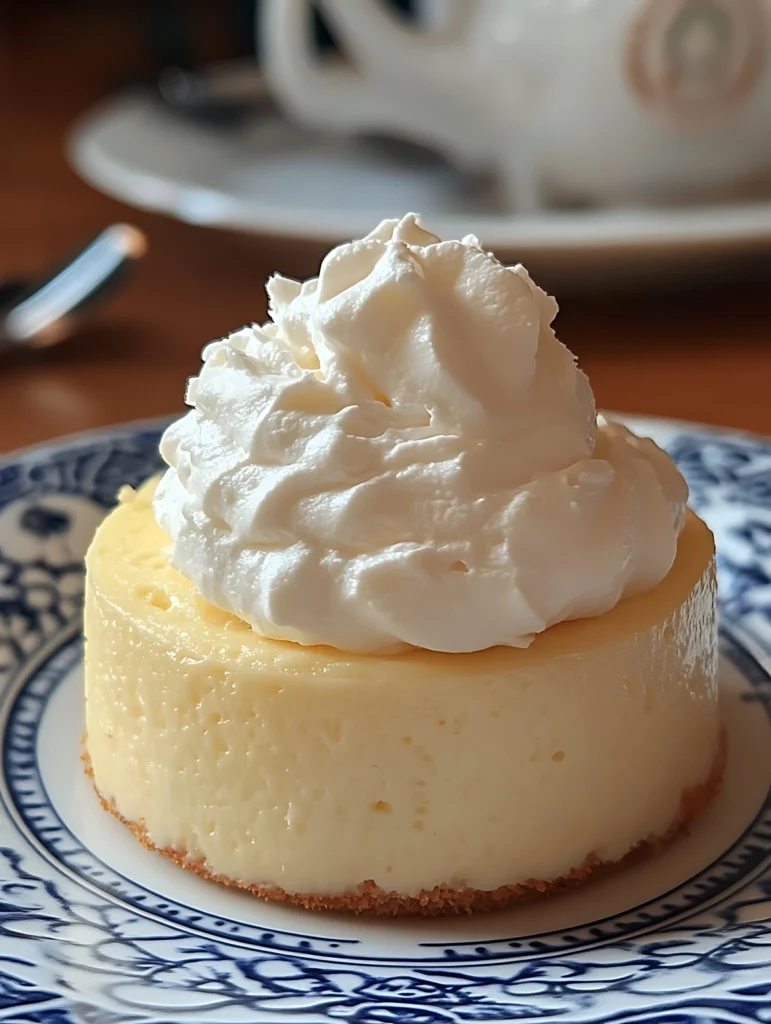
Step-by-Step Recipe for Philadelphia Vanilla Mousse Cheesecake
Follow this simple recipe to create a smooth, creamy, and delicious Philadelphia Vanilla Mousse Cheesecake.
1 : Gather Your Ingredients
For the crust:
- 1 ½ cups graham cracker crumbs
- ¼ cup granulated sugar
- ½ cup melted butter
For the vanilla mousse cheesecake filling:
- 16 oz (2 blocks) Philadelphia cream cheese, softened
- ¾ cup granulated sugar
- 1 tbsp vanilla extract or 1 tsp vanilla bean paste
- 1 cup heavy cream, whipped to stiff peaks
- 1 tbsp gelatin (optional, for a firmer texture)
- 2 tbsp warm water (to dissolve gelatin, if using)
2 : Prepare the Graham Cracker Crust
- Preheat your oven to 325°F (163°C).
- In a mixing bowl, combine the graham cracker crumbs, sugar, and melted butter. Stir until the mixture resembles wet sand.
- Press the mixture firmly into the bottom of a 9-inch springform pan, ensuring an even layer.
- Bake for 8-10 minutes, then remove from the oven and let it cool completely.
3 : Make the Vanilla Mousse Cheesecake Filling
- In a large mixing bowl, beat the Philadelphia cream cheese and sugar together until smooth and creamy.
- Add the vanilla extract or vanilla bean paste and mix until fully incorporated.
- If using gelatin, dissolve it in warm water and mix it into the cream cheese mixture.
- In a separate bowl, whip the heavy cream until stiff peaks form.
- Gently fold the whipped cream into the cream cheese mixture, ensuring a light and airy texture.
4 : Bake the Cheesecake
- Pour the cheesecake filling over the cooled graham cracker crust, spreading it evenly.
- If baking, place the cheesecake in a water bath (wrap the springform pan in foil and place it in a larger pan filled with hot water).
- Bake at 325°F (163°C) for 45-50 minutes, or until the edges are set but the center is slightly jiggly.
- Turn off the oven and leave the cheesecake inside with the door slightly open for 30 minutes to cool gradually.
5 : Cool, Chill, and Set the Mousse Layer
- Once the cheesecake has cooled to room temperature, cover it with plastic wrap and refrigerate for at least 4-6 hours, preferably overnight, to allow it to set fully.
- Before serving, garnish with whipped cream, fresh berries, or a drizzle of caramel or chocolate sauce for an extra touch of indulgence.
Baking Tips for a Perfect Cheesecake
The Importance of a Water Bath
A water bath (bain-marie) is one of the best techniques to ensure an even bake and prevent cracks in your cheesecake. Here’s why it’s important:
- It regulates the baking temperature, preventing the cheesecake from cooking too quickly or unevenly.
- The steam created from the water keeps the cheesecake moist, reducing the risk of cracks.
- It prevents the edges from overcooking while the center remains soft.
To use a water bath, wrap the springform pan in heavy-duty aluminum foil to prevent leaks, then place it in a larger baking dish filled with hot water. The water should reach about halfway up the sides of the pan.
Achieving the Perfect Consistency
- Do not overbake – The cheesecake should be set around the edges but still slightly jiggly in the center when you gently shake the pan.
- Allow it to cool gradually – Sudden temperature changes can cause the cheesecake to contract too quickly, leading to cracks.
- Refrigerate for at least 6 hours (preferably overnight) to allow the flavors to meld and the texture to firm up.
Variations and Toppings
Classic Cheesecake Toppings
Enhance your cheesecake with these classic toppings:
- Fresh berries (strawberries, raspberries, blueberries) for a refreshing contrast.
- Chocolate ganache for a rich and indulgent layer.
- Caramel drizzle for a sweet and buttery touch.
- Whipped cream for extra lightness.
- Crushed cookies or nuts for added crunch.
Flavor Infusions for Extra Depth
Want to switch up the flavor? Try these variations:
- Lemon or orange zest for a citrusy twist.
- Espresso or coffee extract for a mocha-flavored cheesecake.
- Almond or coconut extract for a nutty flavor boost.
- Swirls of fruit puree (such as raspberry or mango) for a beautiful marbled effect.
Common Mistakes to Avoid
Even experienced bakers can run into issues when making cheesecake. Here’s how to avoid the most common mistakes:
Overbaking and Underbaking
- Overbaking: A cheesecake that is baked too long will become dense and dry. Check for doneness by gently shaking the pan—the edges should be set, but the center should have a slight jiggle.
- Underbaking: If the cheesecake is too soft and runny in the center, it may not have baked long enough. Make sure to follow the recommended baking times and allow the cheesecake to set properly in the refrigerator.
Preventing a Soggy Crust
A soggy crust can ruin the texture of your cheesecake. Here’s how to keep it crisp and firm:
- Pre-bake the crust for 8-10 minutes before adding the filling.
- Use a properly sealed springform pan to prevent water from leaking into the crust when using a water bath. Wrap the pan tightly with foil.
- Let the crust cool completely before adding the filling to prevent steam from making it soggy.
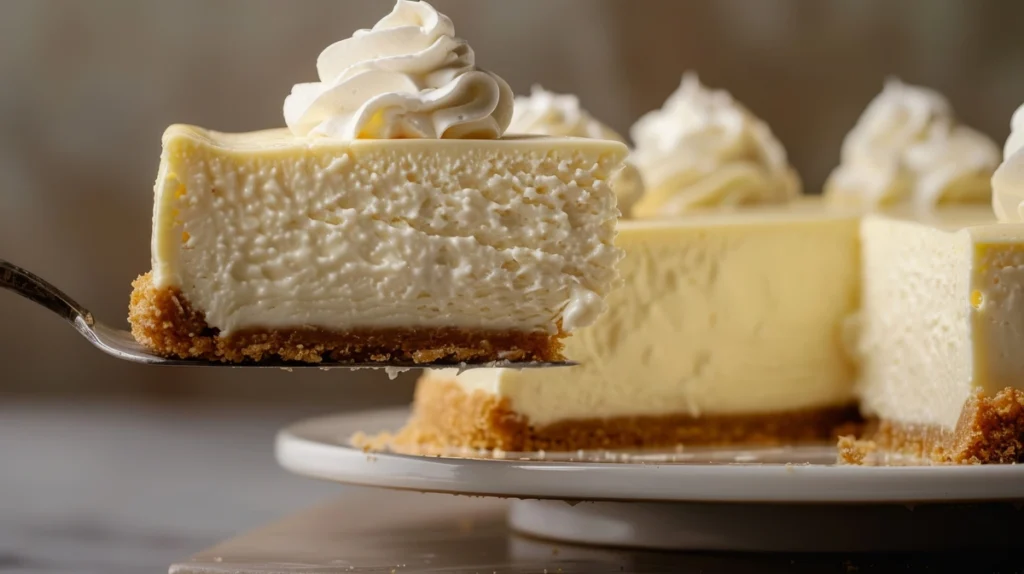
Frequently Asked Questions
Can I Use Low-Fat Cream Cheese?
Yes, you can use low-fat cream cheese, but the texture and richness of the cheesecake may be slightly different. Full-fat Philadelphia cream cheese provides the best creamy consistency and flavor. If using low-fat cream cheese, be aware that the cheesecake may be less firm and slightly tangier.
How Do I Store Leftovers?
To keep your cheesecake fresh:
- Store it in an airtight container or wrap it tightly with plastic wrap.
- Keep it refrigerated for up to 5 days.
- For longer storage, you can freeze the cheesecake (whole or in slices) for up to 3 months. Wrap it tightly in plastic wrap and then aluminum foil before freezing. Thaw in the refrigerator overnight before serving.
Can I Make This Cheesecake Without Baking?
Yes! If you prefer a no-bake version, follow these adjustments:
- Skip the eggs and use additional whipped cream or gelatin to stabilize the filling.
- Chill the cheesecake for at least 6 hours (preferably overnight) to help it set properly.
- Use a firm crust by adding a bit more butter to the graham cracker mixture to hold it together.
How Do I Make a Gluten-Free Version?
To make this cheesecake gluten-free:
- Use gluten-free graham crackers or cookies for the crust. You can find gluten-free options in most grocery stores.
- Ensure all other ingredients are gluten-free, including vanilla extract and any toppings you add
Conclusion
Why You Should Try Making This Cheesecake
Philadelphia Vanilla Mousse Cheesecake is a dessert that is as elegant as it is delicious. Its creamy, airy texture combined with the rich taste of vanilla makes it a perfect treat for any occasion. Whether you’re a seasoned baker or a beginner, this recipe is simple to follow and guarantees impressive results. The mousse-like consistency gives it a lightness that makes every bite irresistible. Plus, with so many variations and topping options, you can easily customize it to suit your taste preferences.
Final Serving and Pairing Suggestions
To make your cheesecake even more enjoyable, consider these serving and pairing ideas:
- Serve chilled for the best texture and flavor.
- Pair with a cup of coffee, espresso, or a glass of dessert wine for a sophisticated treat.
- Add fresh berries or a fruit compote for a refreshing contrast to the rich, creamy filling.
- Drizzle with caramel or chocolate sauce for an extra indulgent touch.
- Top with whipped cream and toasted nuts for added crunch and elegance.
No matter how you serve it, Philadelphia Vanilla Mousse Cheesecake is guaranteed to impress your family and friends. So go ahead—treat yourself to this luxurious, creamy dessert and enjoy every delicious bite!
Viral Tuna Salad: 5 Bold Reasons Matthew McConaughey’s Recipe Wins
Healthy Homemade Chicken Mortadella
Chicken Mortadella changed my deli game forever. I used to stare at processed meat…
The BEST Taco Pasta
When I’m short on time and need to get a satisfying dinner on…
Classic German Kartoffelpuffer Recipe (Authentic, Crispy & Easy to Make)
Easy Butter Pecan Cookies Recipe
There’s something undeniably comforting about the scent of buttery, nutty cookies wafting from…
Perfect Strawberry Cheesecake Recipe
If there’s one dessert that’s guaranteed to silence a lively room, it’s this…


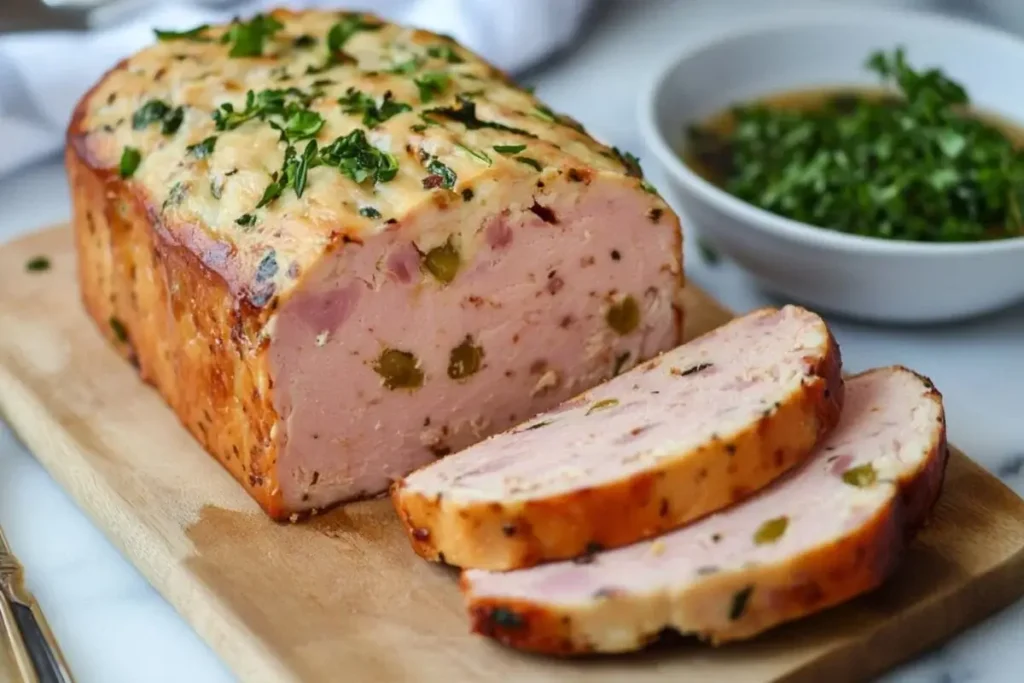

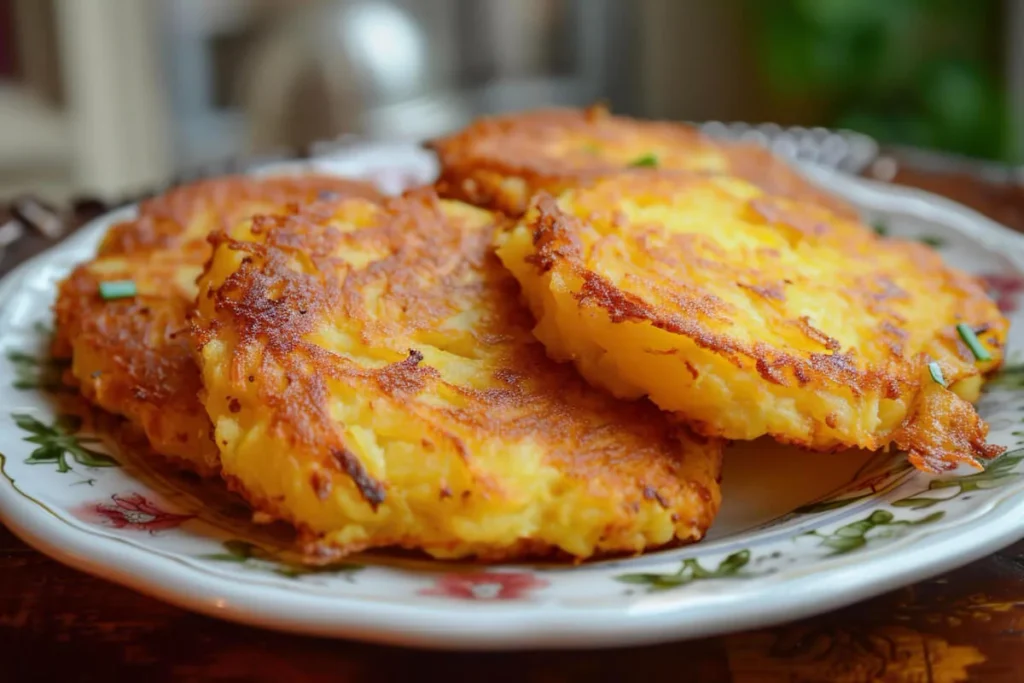

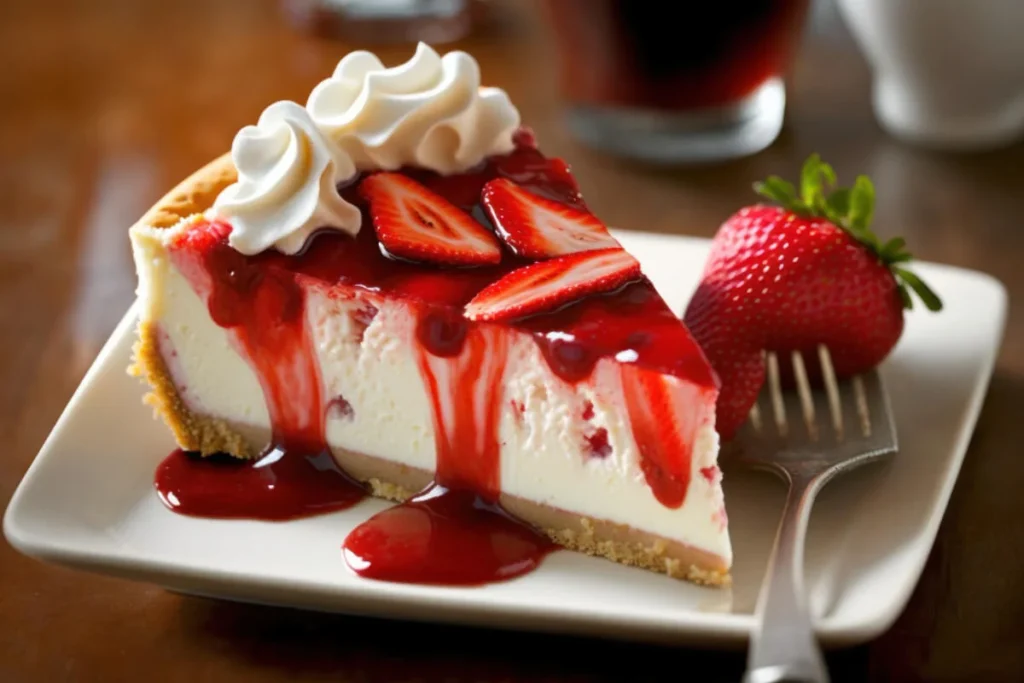
1 thought on “Philadelphia Vanilla Mousse Cheesecake”